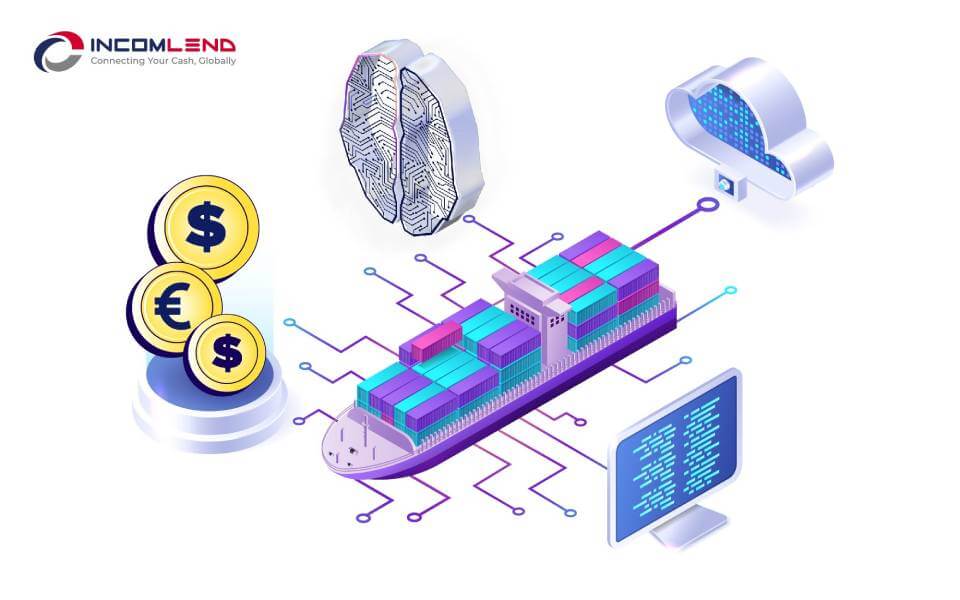Is AI a Game Changer for Trade Finance?
May 30, 2024
Trade finance, which is critical for global business, has long been afflicted by lengthy manual processes and paperwork. These inefficiencies increase expenses and cause considerable delays, limiting organizations’ capacity to trade globally efficiently. With the introduction of Artificial Intelligence (AI), a dramatic shift is taking place in the industry, promising to improve trade finance by increasing efficiency, transparency, and security. This trend toward trade finance automation is a critical advancement in handling international transactions and avoiding risks.
AI in Trade Finance: A Range of Possibilities
AI comprises a wide range of technologies that replicate human intelligence in finance. It combines machine learning (ML), which enables algorithms to learn from data without explicit instructions, and deep learning, which use complicated neural networks to evaluate data at numerous levels. Generative AI is a particularly groundbreaking development that generates new data instances from existing datasets. Generative AI in business is positioned to solve long-standing problems by providing novel solutions that were not attainable with old methodologies.
Transformative Impact of AI on Trade Finance
Trade Finance Workflow Automation
AI can drastically reduce the time it takes to complete a trade finance transaction and automate Trade Finance workflows. AI automates the handling of complicated papers such as letters of credit, bills of lading, and trade invoices, which were previously prone to errors and inefficiencies. AI digitizes these documents using Optical Character Recognition (OCR), Machine Learning (ML) models classify them, and Natural Language Processing (NLP) extracts key information. This automation extends to guaranteeing regulatory compliance and conducting anti-money laundering inspections with sophisticated algorithms.
Credit Risk Assessment
ML models can use past data and external sources to better properly evaluate the creditworthiness of trading partners. This enables banks to make more informed loan decisions while reducing risk.
Customer interface
Artificial intelligence-powered interfaces, like as chatbots and virtual assistants, enhance customer interactions by offering real-time, individualized assistance. These interfaces can respond promptly to queries, walk users through the application process, and provide transaction progress updates. By interacting with backend systems, they can retrieve precise data to answer problems and provide specialized advise.
Personalized Trade Finance Solutions
By analysing a company’s trade data and financial health, AI may make tailored suggestions to each customer. This could include advising the best financing alternatives, adjusting insurance coverage, and even recommending potential trade partners based on transaction history and creditworthiness.
Generative AI in Trade Finance: Expanding Capabilities and Use Cases
With large volumes of data now available thanks to publicly available papers and data extraction via workflow automation, Generative AI has the potential to greatly improve a variety of Trade Finance tasks, including Risk Management, Decision Making, Customer Interactions, and more.
For example, Generative AI is critical in predictive analytics, as it uses previous data to foresee probable supply chain disruptions, payment delinquencies, and customer churn. Generative AI can boost predictive analytics by improving models, adding scenarios, and enriching data. As a result, financiers can more proactively manage both financial and commercial risks.
Generative AI also helps with dynamic discounting and supply chain financing by analyzing real-time data to determine the financial stability of trading partners. This activity enables early payments at lower rates and identifies financial possibilities throughout the supply chain, which improves liquidity and operational stability, particularly for small enterprises.
In addition, fraud detection is a more advanced application of generative AI. Generative AI trains models to detect minor signals of fraud more efficiently by building synthetic datasets that imitate authentic trade documents, hence improving trade finance transaction security.
The Road Ahead: Data and Challenges
AI’s successful performance in trade finance is strongly dependent on data availability and quality. Well-structured, large datasets are required for training strong AI models that can continually develop and deliver accurate forecasts and superior decision-making capabilities.
Despite its potential, integrating AI into trade finance presents various hurdles, including data harmonization, regulatory compliance, and the requirement for a competent staff. Data from diverse sources is typically inconsistent, which can impede AI effectiveness. The regulatory landscape for AI in finance is complicated, and financial firms must not only comply with present rules but also prepare for future regulations. Furthermore, there is a substantial skills gap, as the sophisticated nature of AI solutions necessitates experts with expertise in both AI technology and trade finance.
Security is another significant worry, since AI systems must be protected against potential cyber threats and data breaches. Ensuring data integrity and making sound decisions is critical for avoiding financial and reputational harm.
Conclusion
Despite these limitations, the future of artificial intelligence in trade finance looks promising. Collaboration between technology suppliers, financial institutions, regulatory authorities, and academic institutions is required to realize AI’s full potential in this industry. By overcoming these obstacles, stakeholders can create a safe, efficient, and innovative ecosystem that transforms trade finance operations and establishes new industry benchmarks. This collaborative endeavour will solve not just operational and regulatory difficulties, but also set the road for long-term growth and innovation in global trade financing.
